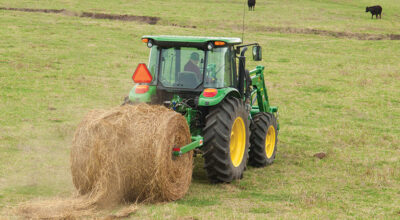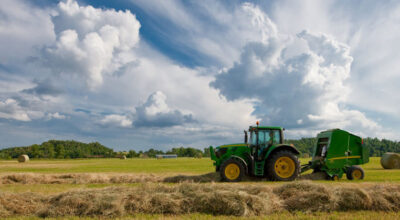With all the time and effort that goes into planting and harvesting hay crops, farmers expect a quality final product. When all is said and done, one may ask themselves, “Do hay bale dimensions actually matter?” The answer is a resounding yes! The proper hay bale dimensions can make or break the success of your crop yields; for this reason, it’s essential for farmers to know the necessary measurements for their hay’s purposes.
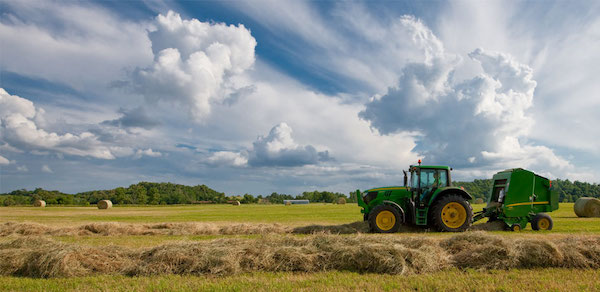
In this post, we will discuss the importance of hay bale dimensions, as well as how to determine what measurements are best for your farm. The dimension, density, and weight of hay bales influence their nutrient content, their value for being bought and sold, the cost of feeding livestock, and how easily they can be stored and transported.
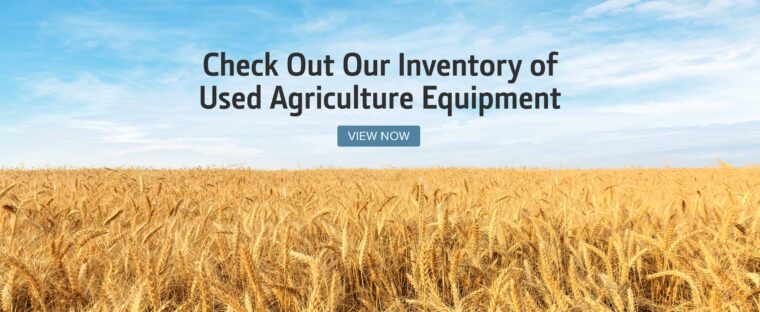
Hay Bale Dimensions
Whether you are producing square bales or round bales, the shape and size can have more impact than you might think.
Small Bales
For farms and ranches feeding a small amount of livestock, small, squares bales are used because they can be easily carried by hand. The dimension of a small bale held together by three strings is approximately 16” high x 22” wide x 44” long (406.4 mm high x 558.8 mm wide x 1117.6 mm long) and usually weighs 100lbs. Three string bales are less common than two string bales which usually measure 14″ high x 18″ wide x 35″ long and weighs 50-60lbs (355.6 mm high x 457.2 mm wide x 889 mm long).
So, what are the dimensions of a small square hay bale then? Those that want to produce these types of bales can revel in the fact that square baler equipment can be adjusted to set the desired dimensions. A small, square bale with these dimensions will feed one horse for a week if fed twice a day. About 10-12 square bales make a round bale, which means it’s an option best suited for small farms; large farms would not find small bales effective due to the extra time and resources it would take to produce the same amount of hay.
Large Bales
Large, round bales of hay are found on farms with a higher population of livestock because of their capacity to feed multiple cows at once. These bales tend to measure 5ft wide by 6ft tall (1.5 m wide x 1.8 m tall) and weigh approximately 1500lbs. By baling with these dimensions, farmers spend less money creating the bale and it sells for a higher value than if it were only 4ft by 4ft (1.2 m x 1.2 m). It also requires fewer trips from the field to the hay lot, which cuts down on transportation costs. Five large bales at 5ft by 6ft (1.5 m x 1.8 m) will feed approximately 30 cows per week, assuming each cow consumes 32.5lbs (14.7 kgs) per day.
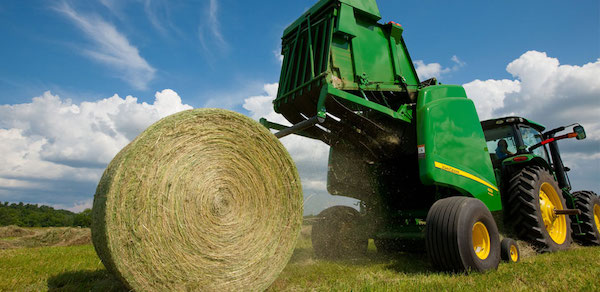
As you begin preparing for this season’s hay crop harvest, remember to evaluate the hay needs of your farm and determine which size, shape, and dimension will work best. Sometimes details that seem insignificant can be overlooked but these same details can have a substantial impact on your farm’s bottom line.
If you have any questions about John Deere hay baling equipment, you can contact your local John Deere dealer.
If you enjoyed this post or want to read others, feel free to connect with us on Facebook, Pinterest, or Twitter!
